- Isophorone
-
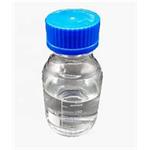
- $6.00 / 1KG
-
2024-04-13
- CAS:78-59-1
- Min. Order: 1KG
- Purity: More than 99%
- Supply Ability: 2000KG/Month
- Isophorone
-
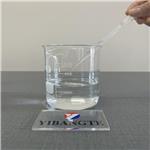
- $0.00 / 1kg
-
2024-03-29
- CAS:78-59-1
- Min. Order: 1kg
- Purity: 99%
- Supply Ability: 50000kg
- Isophorone
-
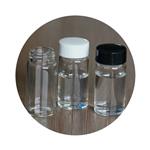
- $0.00 / 1kg
-
2023-12-29
- CAS:78-59-1
- Min. Order: 1kg
- Purity: 99%
- Supply Ability: 1000000
|
| Product Name: | Isophorone | | Synonyms: | ISOPHORONE;ISOPHORONE 97+%;ISOPHORONE, 5000MG, NEAT;IsophoroneForSynthesis;1,1,3-TRIMETHYLCYCLOHEXEN-3-ONE-5;1,5,5-Trimethyl-1-cyclohexen-3-one;ai3-00046;alpha-Isophoron | | CAS: | 78-59-1 | | MF: | C9H14O | | MW: | 138.21 | | EINECS: | 201-126-0 | | Product Categories: | Organics;78-59-1 | | Mol File: | 78-59-1.mol | 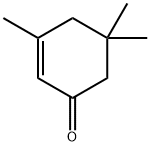 |
| | Isophorone Chemical Properties |
| Melting point | -8 °C (lit.) | | Boiling point | 213-214 °C (lit.) | | density | 0.923 g/mL at 25 °C (lit.) | | vapor density | 4.77 (vs air) | | vapor pressure | 0.2 mm Hg ( 20 °C) | | refractive index | n20/D 1.476(lit.) | | FEMA | 3553 | ISOPHORONE | | Fp | 184 °F | | storage temp. | Store below +30°C. | | solubility | 14.5g/l | | form | Liquid | | color | Clear colorless to yellow | | Odor | Like camphor. | | explosive limit | 0.8-3.8%(V) | | Odor Type | woody | | Water Solubility | Soluble in water (12g/L). | | Merck | 14,5196 | | JECFA Number | 1112 | | BRN | 1280721 | | Henry's Law Constant | (x 10-6 atm?m3/mol):
5.8 (calculated, U.S. EPA, 1980a) | | Exposure limits | TLV-TWA 25 mg/m3 (5 ppm); IDLH 800
ppm. | | Stability: | Stable. Substances to be avoided include strong bases, strong acids and strong oxidizing agents. | | LogP | 1.67-1.7 at 20℃ | | CAS DataBase Reference | 78-59-1(CAS DataBase Reference) | | NIST Chemistry Reference | 2-Cyclohexen-1-one, 3,5,5-trimethyl-(78-59-1) | | EPA Substance Registry System | Isophorone (78-59-1) |
| Hazard Codes | Xn | | Risk Statements | 21/22-36/37-40 | | Safety Statements | 13-23-36/37/39-46 | | RIDADR | UN 3082 9 / PGIII | | WGK Germany | 1 | | RTECS | GW7700000 | | Autoignition Temperature | 864 °F | | TSCA | Yes | | HS Code | 2914 29 00 | | Hazardous Substances Data | 78-59-1(Hazardous Substances Data) | | Toxicity | LD50 in male, female rats and male mice (mg/kg): 2700 ±200, 2100 ±200, 2200 ±200 orally (PB90-180225) | | IDLA | 200 ppm |
| | Isophorone Usage And Synthesis |
| Description | Isophorone (chemical formula: C9H14O) has its full name being 3, 5, 5-Trimethyl-2-cyclohexen-1-one. It is a kind of α, β-unsaturated cyclic ketone, and is a flavoring ingredient existing in cranberries and saffron. Isophorone can be used as a solvent in some printing inks, paints, lacquers, adhesives, copolymers, coatings, finishings and pesticide. It can also act as an intermediate in organic synthesis as well as the ingredient in wood preservatives and floor sealants. It is mainly manufactured through the self-condensation of acetone with KOH.
| | Chemical Properties | Isophorone, an alpha, beta-unsaturated ketone, is also an industrial solvent used in a variety of different applications. Most of the isophorone used in industry is used in vinyl coatings and inks.
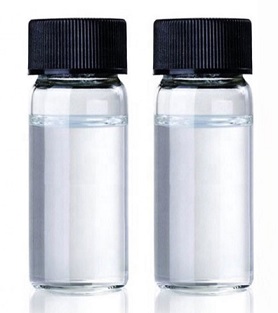
Isophorone is an insoluble, colorless to white liquid and has an odor similar to peppermint. Its characteristic odor is detectable at concentrations as low as 1.00 mg/m3 (0.2 ppm) (Ruth, 1986). Although not highly volatile, with a vapor pressure of 0.438mm Hg at 25 °C.
| | References | https://en.wikipedia.org/wiki/Isophorone
https://pubchem.ncbi.nlm.nih.gov/compound/isophorone#section=Top
| | Chemical Properties | Isophorone is a colorless low volatility liquid that smells like peppermint. It is miscible with most organic solvents and can dissolve 1.2g in 100g of water. When exposed to light, it becomes a dimer, which is oxidized in air to generate 4,4,6-Trimethyl-1,2-cyclohexanedione. | | Physical properties | Clear, colorless liquid with a sharp peppermint or camphor-like odor. Experimentally determined
detection and recognition odor threshold concentrations were 1.1 mg/m3 (190 ppbv) and 3.0 μg/m3
(530 ppbv), respectively (Hellman and Small, 1974). | | Occurrence | Reported found in Burley tobacco, cranberry, macadamia nuts, peas, roasted filbert, saffron, wine, osmanthus,
grapefruit juice, papaya, kohlrabi, Parmesan cheese, roast beef, black tea, oats, Japanese plum, prunes, plumcot, starfruit, mango,
rice, buckwheat, okra and sweet grass oil. | | Uses | Isophorone is used as a solvent for vinylresins and cellulose esters, and in pesticides. solvent in some printing inks, paints, lacquers and adhesives. As a cyclic unsaturated ketone, isophorone can be aromatized to 3,5-dimethylphenol or 2,3,5-trimethylphenol. Hydrogenation leads, depending on conditions, to 3,3,5-trimethylcyclohexanone or 3,3,5- trimethylcyclohexanol, from which trimethyladipic acid is obtained by oxidation [78]. Trimethyladipic acid is used for the production of 2,2,4- trimethylhexamethylenediamine, which is a precursor for polyamides and polyurethanes. Addition of hydrogen cyanide to the olefinic double bond, followed by amination of the keto group in the presence of hydrogen, gives 3,5,5-trimethyl-3-aminomethylcyclohexylamine [2855-13-2], isophorone diamine. Reaction of the latter with phosgene gives isophorone diisocyanate [4098-71-9]. Both compounds are used in large quantities for the production of polymers, mainly polyurethanes. Worldwide production capacity for isophorone is ca. 50 000 t/a. | | Definition | ChEBI: Isophorone is a cyclic ketone, the structure of which is that of cyclohex-2-en-1-one substituted by methyl groups at positions 3, 5 and 5. It has a role as a solvent and a plant metabolite. It is a cyclic ketone and an enone. | | Preparation | Isophorone is produced on a multi-thousand ton scale by the aldol condensation of acetone using KOH. Diacetone alcohol, mesityl oxide, and 3-hydroxy-3,5,5-trimethylcyclohexan-1-one are intermediates. A side product is beta-isophorone, where the C=C group is not conjugated with the ketone. | | Aroma threshold values | Detection: 0.20 ppm; aroma characteristics at 1.0%: cooling, woody, camphoraceous, slightly green and
herbal | | Taste threshold values | Taste characteristics at 30 ppm: sweet, green, waxy, pungent camphoreous, cooling minty | | Synthesis Reference(s) | Synthetic Communications, 22, p. 1845, 1992 DOI: 10.1080/00397919208021315
Synthesis, p. 905, 1978 DOI: 10.1055/s-1978-24936 | | General Description | A clear colorless liquid, with a camphor-like odor. Less dense than water and insoluble in water. Boiling point 420°F. Flash point near 200°F. Contact irritates skin and eyes. Toxic by ingestion. Used as a solvent and in pesticides. | | Air & Water Reactions | Insoluble in water. | | Reactivity Profile | Ketones, such as Isophorone, are reactive with many acids and bases liberating heat and flammable gases (e.g., H2). The amount of heat may be sufficient to start a fire in the unreacted portion of the ketone. Ketones react with reducing agents such as hydrides, alkali metals, and nitrides to produce flammable gas (H2) and heat. Ketones are incompatible with isocyanates, aldehydes, cyanides, peroxides, and anhydrides. They react violently with aldehydes, HNO3, HNO3 + H2O2, and HClO4. Forms explosive peroxides | | Health Hazard | Isophorone is an irritant, moderately toxic athigh concentrations, mutagenic and possiblycarcinogenic. Inhalation of its vapors cancause mild irritation of the eyes, nose, andthroat. Exposure to 840 ppm for 4 hours resulted in severe eye irritation in guineapigs. Its irritation effect on human eyes maybe felt at 25–40 ppm. At concentrationsabove 200 ppm, it may cause irritation ofthe throat, headache, nausea, dizziness, and afeeling of suffocation (ACGIH 1986). In rats,exposure to 1840 ppm for 4 hours was fatal.Ingestion of isophorone can cause narcosis,dermatitis, headache, and dizziness.
LD50 value, oral (rats): 2330 mg/kg
Isophorone is mutagenic and when fed torats orally, 258 g/kg for 2 years, it causedkidney tumor. Its carcinogenicity on humansis not reported. | | Fire Hazard | Combustible. | | Flammability and Explosibility | Not classified | | Chemical Reactivity | Reactivity with Water No reaction; Reactivity with Common Materials: No reactions; Stability During Transport: Stable; Neutralizing Agents for Acids and Caustics: Not pertinent; Polymerization: Not pertinent; Inhibitor of Polymerization: Not pertinent. | | Industrial uses | Isophorone is an excellent solvent for cellulose esters, nitrocellulose, natural and synthetic resins. Isophorone has a very high aromatic hydrocarbon dilution ratio in nitrocellulose formulations: 5.7 for toluene and 5.1 for xylene. The excellent solvency of isophorone allows the preparation of 45% solids nitrocellulose solutions at room temperatures. | | Biochem/physiol Actions | Taste at 30 ppm | | Synthesis | Isophorone is an intermediate in the synthesis of 3,5-xylenol, 3,3,5-trimethylcyclohexanol | | Carcinogenicity | In a 2 year bioassay in rats and
mice (conducted by gavage on a 5- day/week treatment
schedule) at dose levels of 0, 250, and 500 mg/kg/day isophorone, there was decreased survival of male rats and
slight nephrotoxicity in female rats. There was no evidence
of carcinogenicity in female rats or mice. In male rats, there
was an increase in renal tumors in animals given either 250
or 500 mg/kg/day, and a low incidence of preputial gland
tumors at 500 mg/kg. Other proliferative lesions in male rats
included hyperplasia of the renal pelvis and tubular cell
hyperplasia. | | Environmental fate | Biological. The pure culture Aspergillus niger biodegraded isophorone to 3,5,5-trimethyl-2-
cyclo-hexene-1,4-dione, 3,5,5-trimethylcyclohexane-1,4-dione, (S)-4-hydroxy-3,5,5-trimethyl-2-
cyclohex-1-one, and 3-hydroxymethyl-5,5-dimethyl-2-cyclohexen-1-one (Mikami et al., 1981).
Chemical/Physical. At an influent concentration of 1,000 mg/L, treatment with GAC resulted in
an effluent concentration of 34 mg/L. The adsorbability of the carbon used was 193 mg/g carbon
(Guisti et al., 1974).
Isophorone will not hydrolyze in water.
At influent concentrations of 10, 1.0, 0.1, and 0.001 mg/L, the GAC adsorption capacities were
78.3, 32.0, 13.1, and 5.4 mg/g, respectively (Dobbs and Cohen, 1980). | | Purification Methods | Wash isophorone with aqueous 5% Na2CO3 and then distil it under reduced pressure immediately before use. Alternatively, it can be purified via the semicarbazone. [Erskine & Waight J Chem Soc 3425 1960, Beilstein 7 IV 165.] | | Toxicity evaluation | The toxicological mechanisms of isophorone are not well
characterized. Critical effects include irritation, narcosis,
malaise, fatigue, and CNS depression. Isophorone may induce
its neurological effects by interference with neuronal impulse
transmissions via physical interaction with nerve membrane
components. In animal models, isophorone may also act by
inducing neuropathy, involving binding to globulin proteins,
although this mechanism may not be relevant to humans.
Lesions of the liver have been observed after overexposure in
mouse models, although it is not clear whether isophorone
elicited the lesions directly or by enhancing an age-related
process. DNA-binding studies in mice have shown no significant
covalent binding of isophorone or its metabolites to DNA
from liver or kidney cells, supporting a potential nongenotoxic
mechanism of toxicity. | | Waste Disposal | Incineration. |
| | Isophorone Preparation Products And Raw materials |
| Raw materials | Acetone-->4-Penten-2-one, 4-methyl--->Methyl acetoacetate-->Diacetone Alcohol-->Mesityl oxide | | Preparation Products | Isophorone diisocyanate-->Cyclohexanone, 3,3,5-trimethyl-, (5S)--->3,5,5-trimethylcyclohex-3-en-1-one-->2,2,4,4,6-pentamethyl-hexahydropyrimidine-->ISOPHORONE (3-METHYL-D3, 2,4,4,6,6-D5) |
|